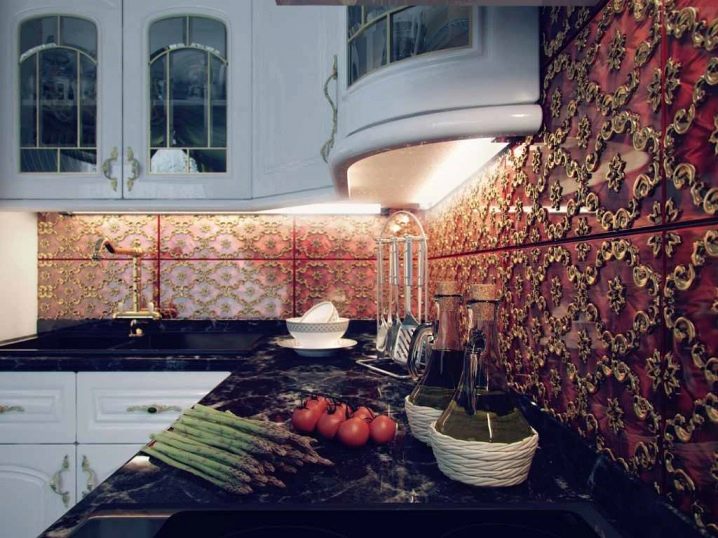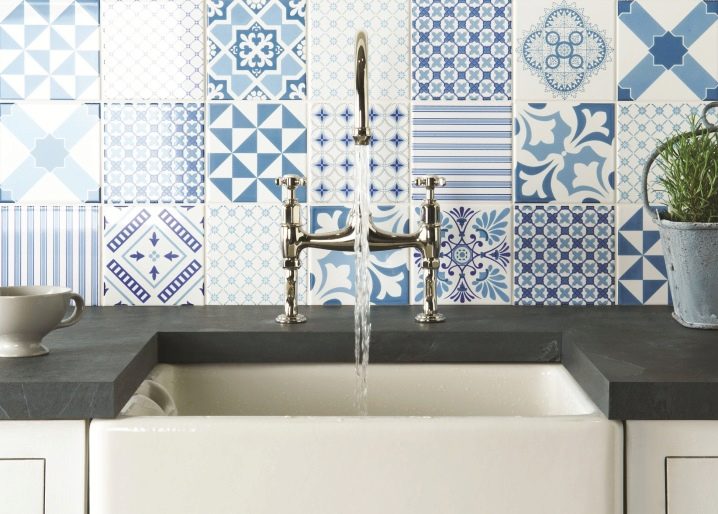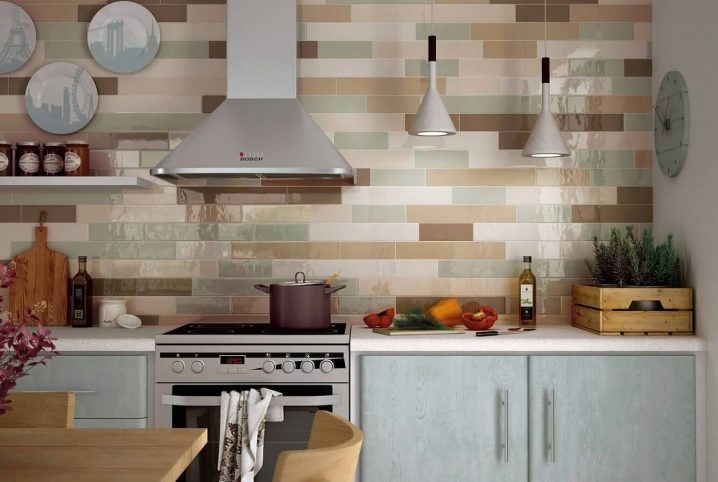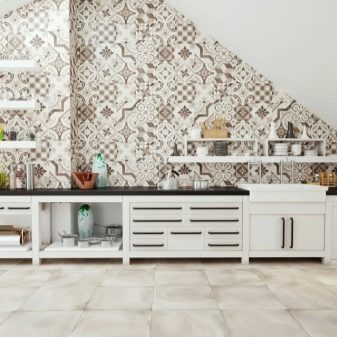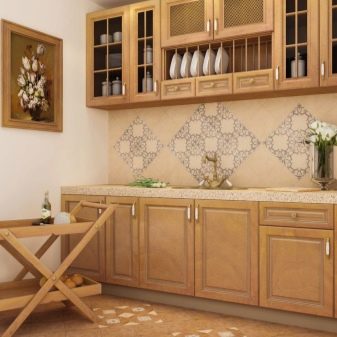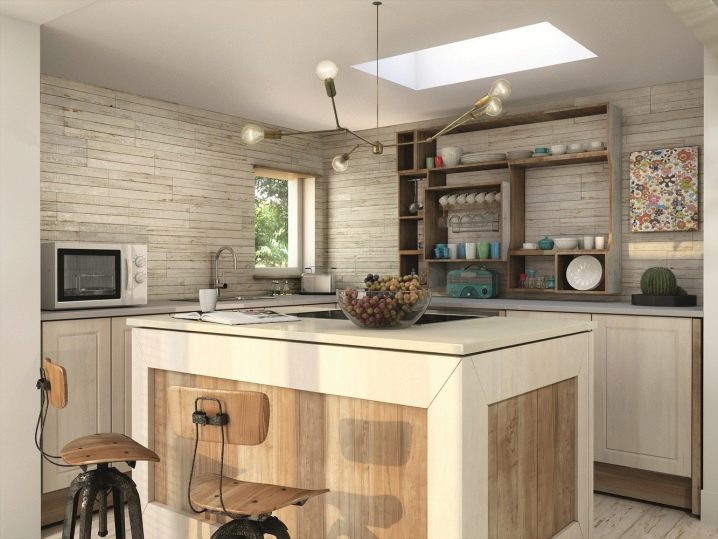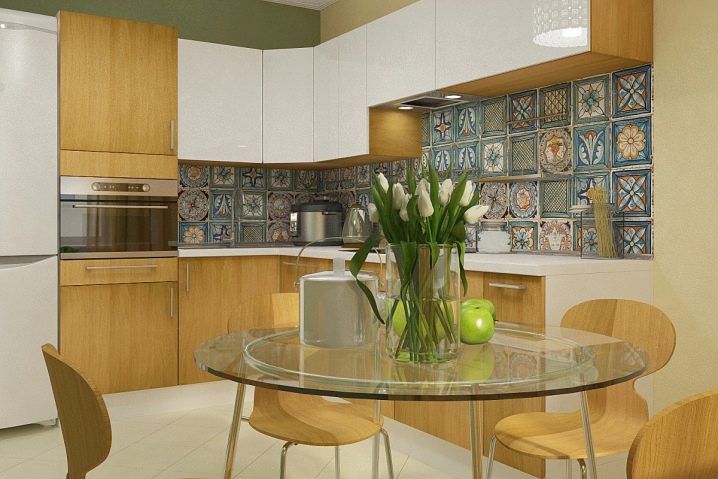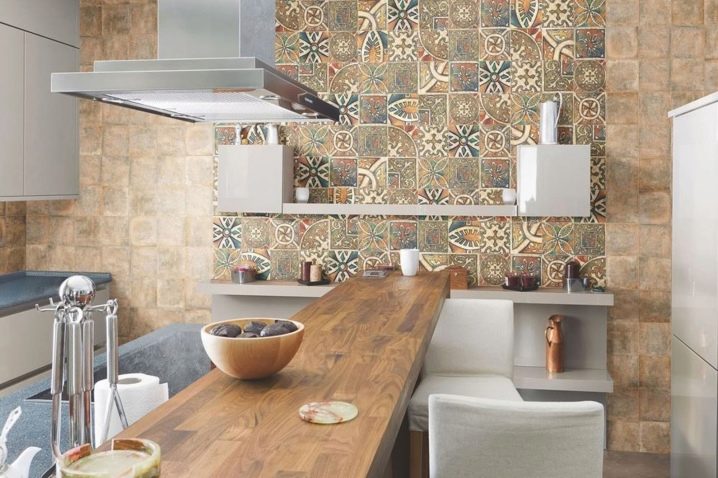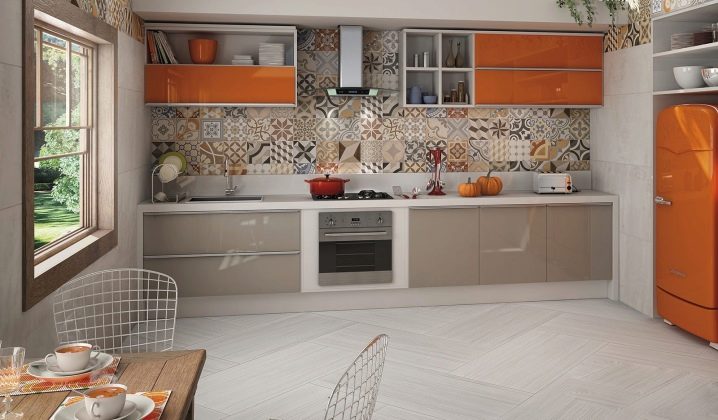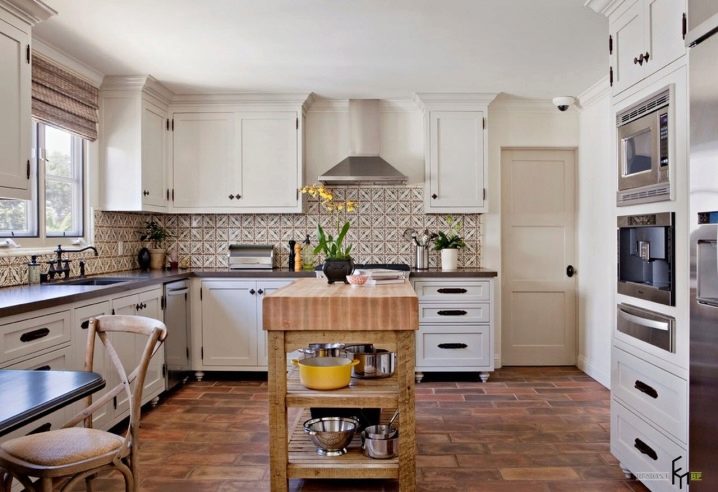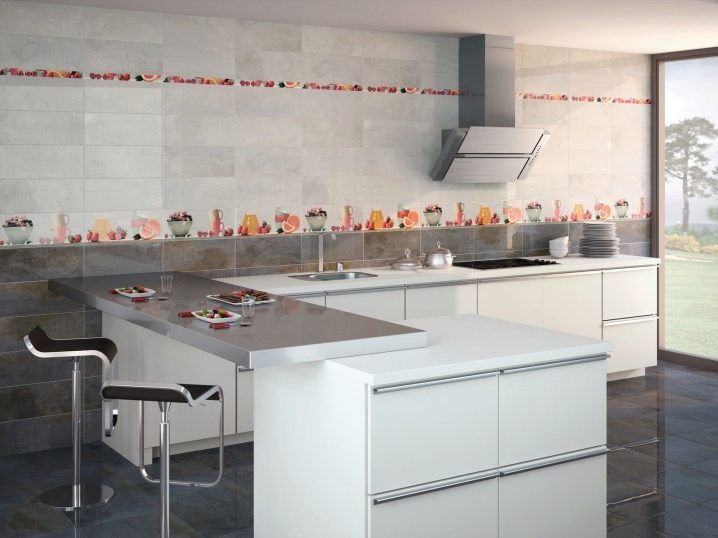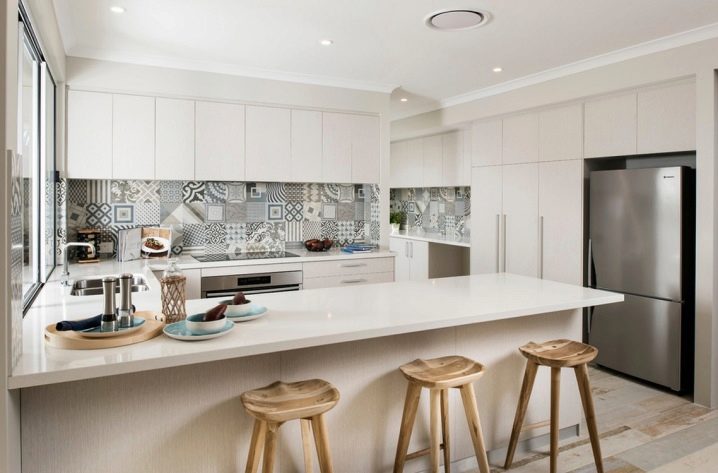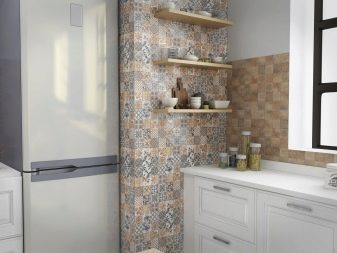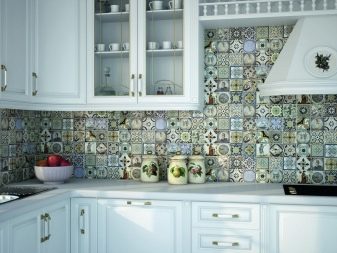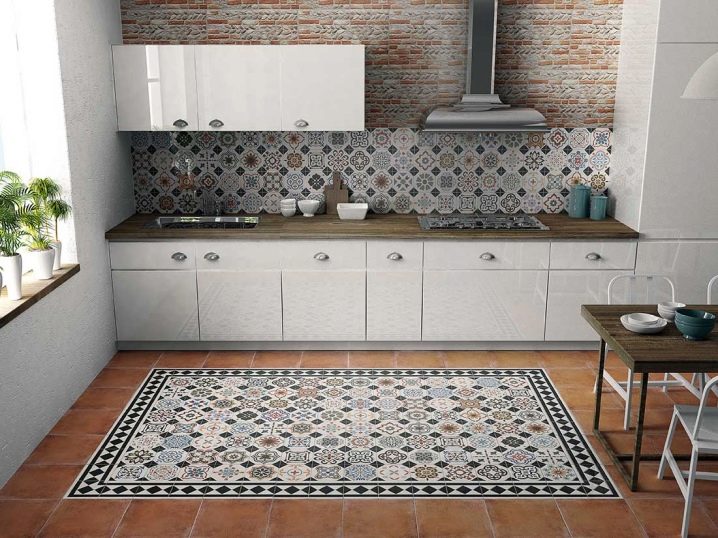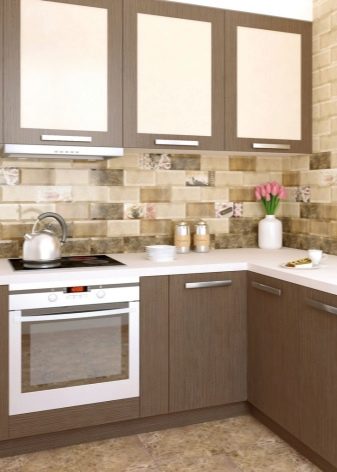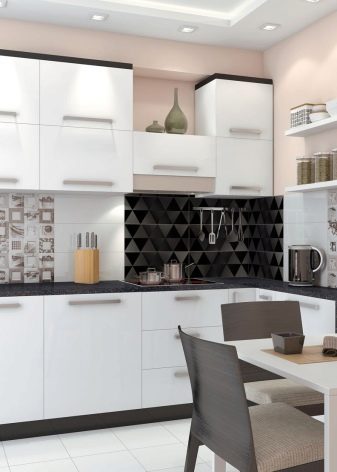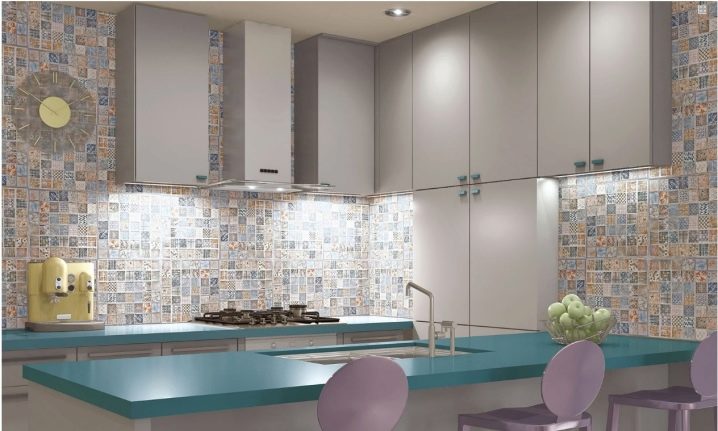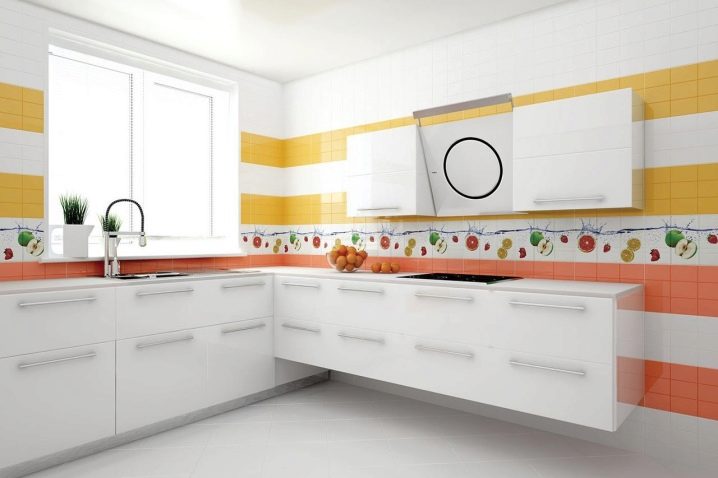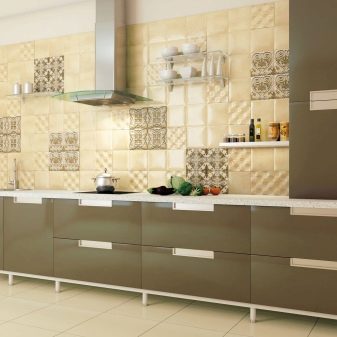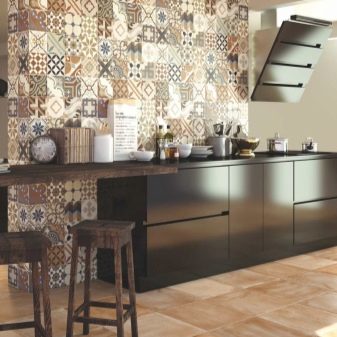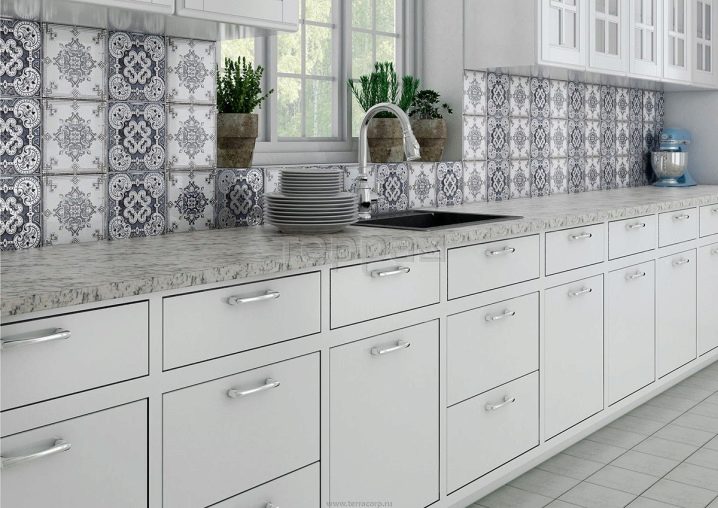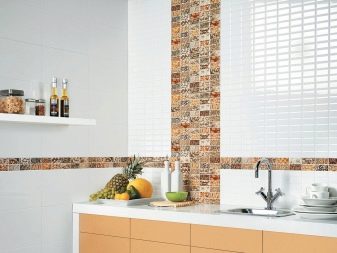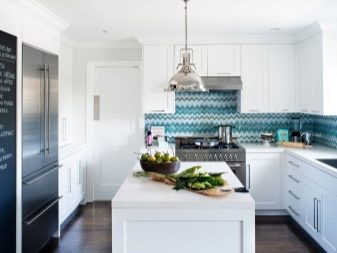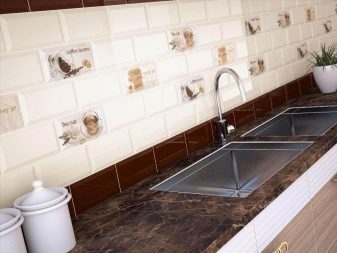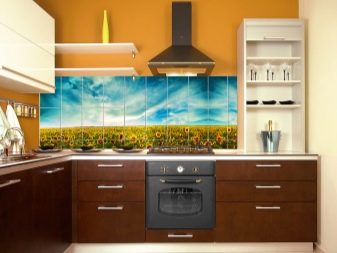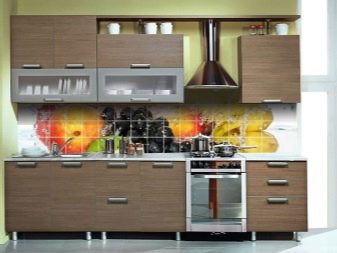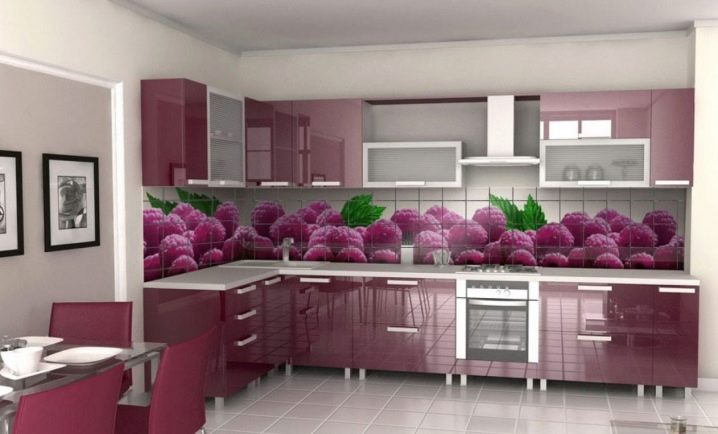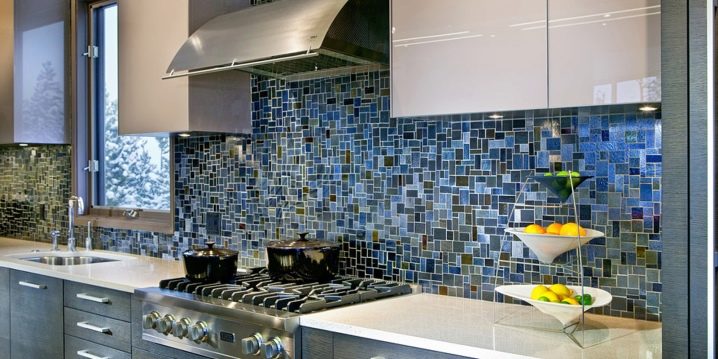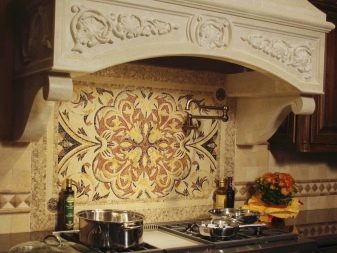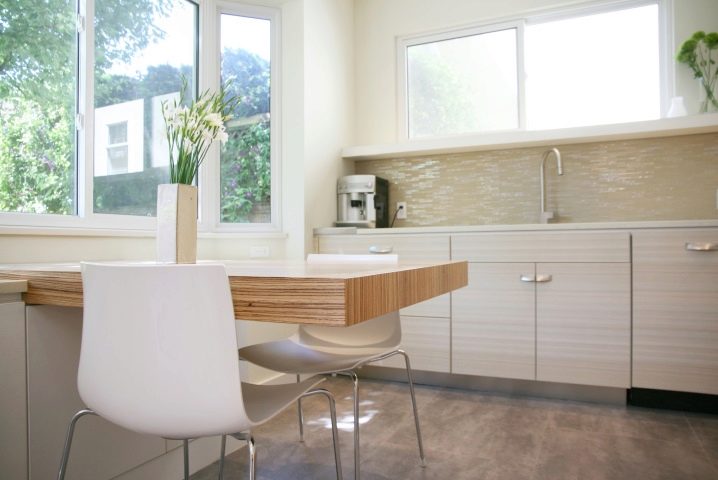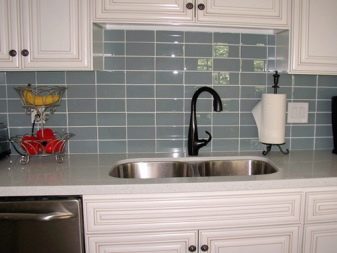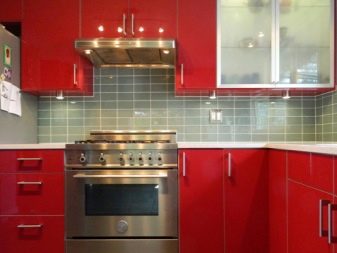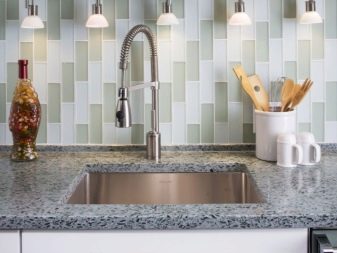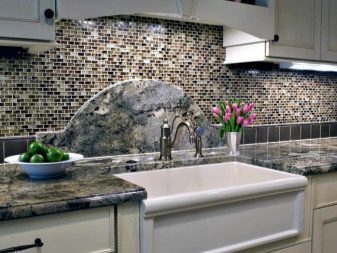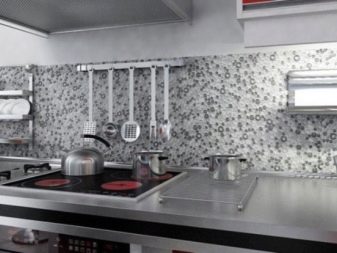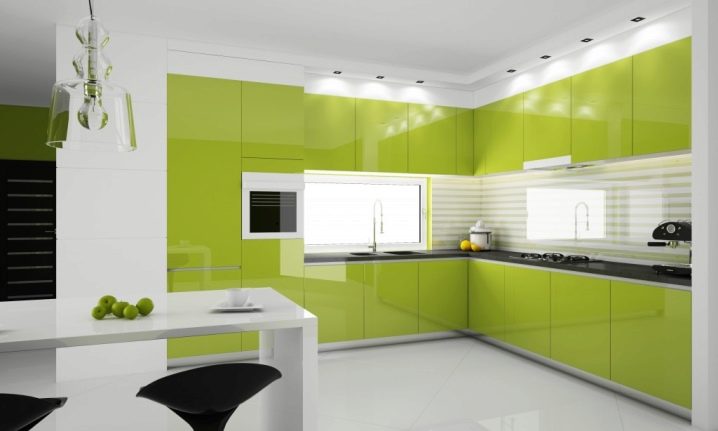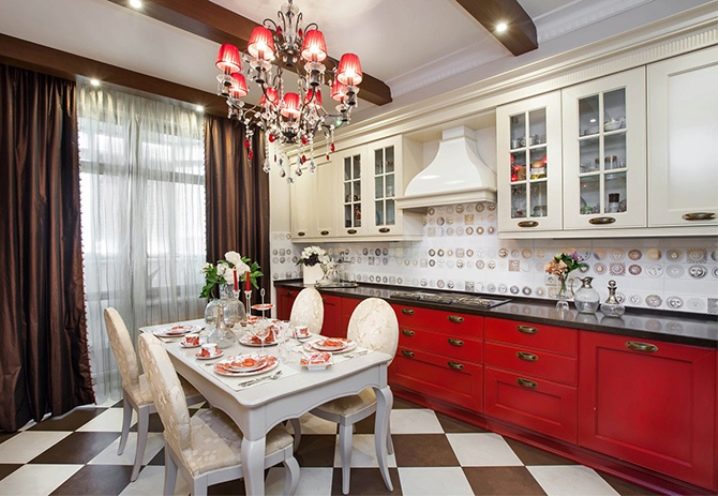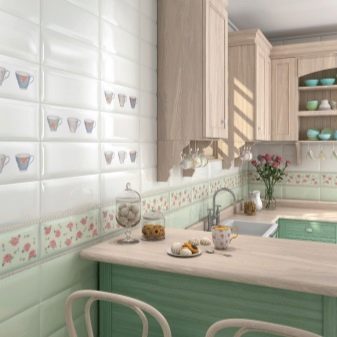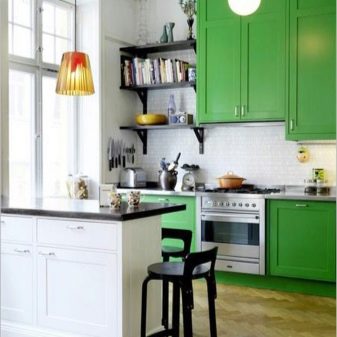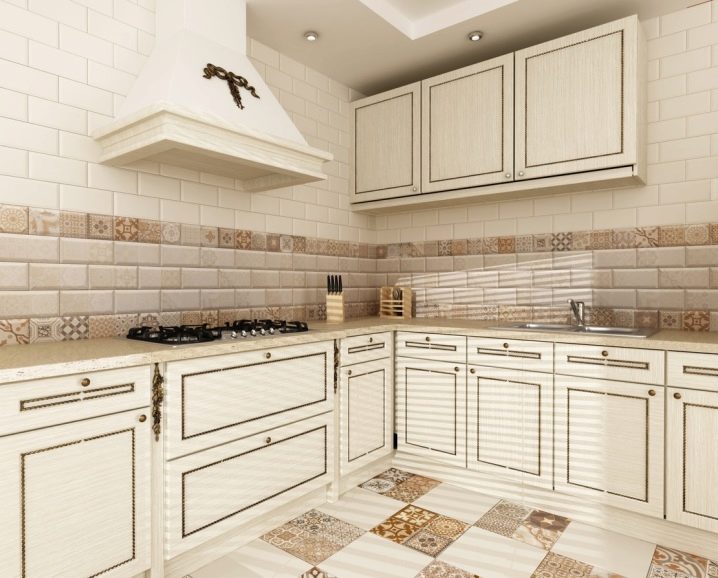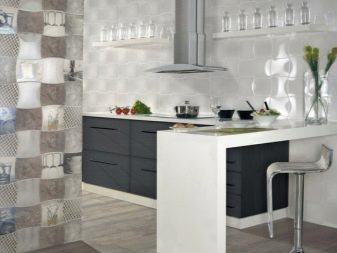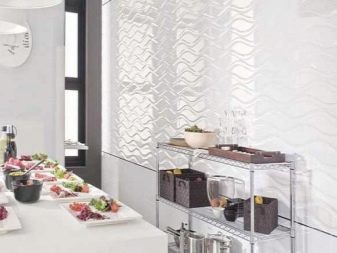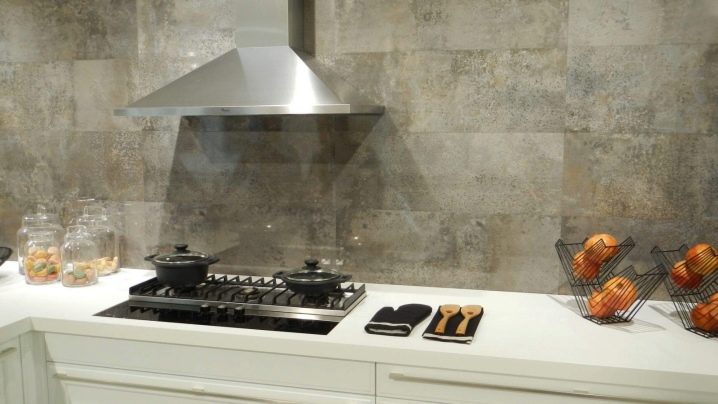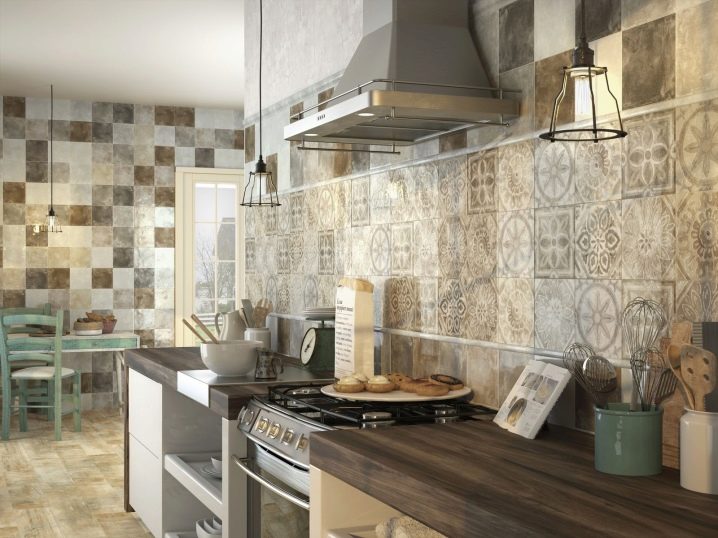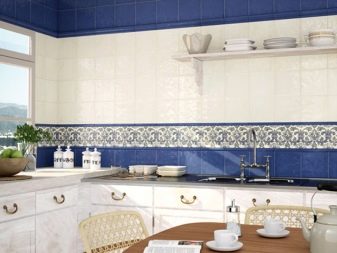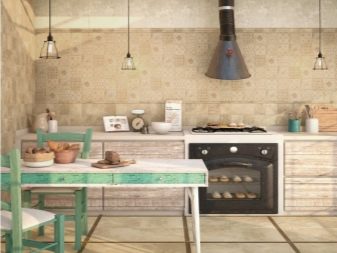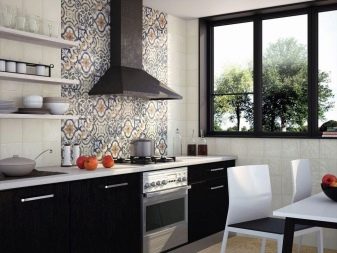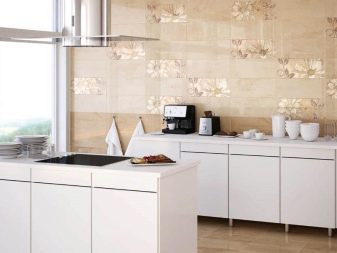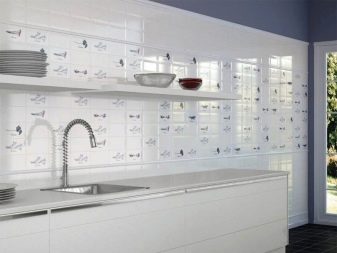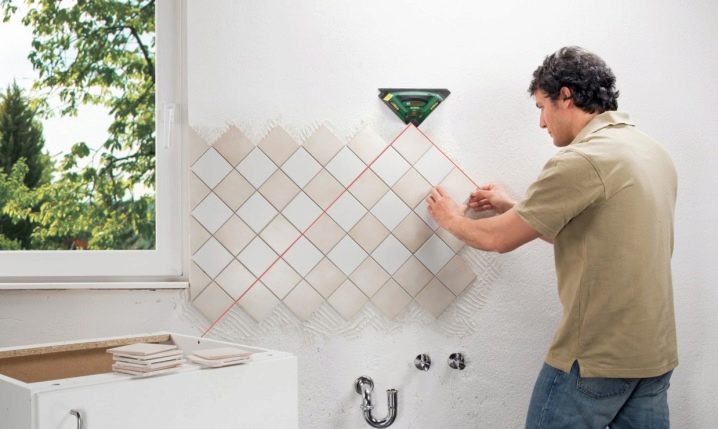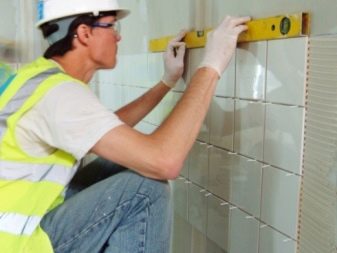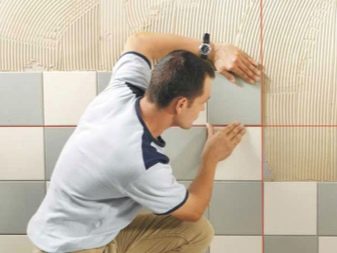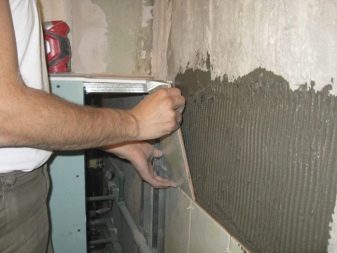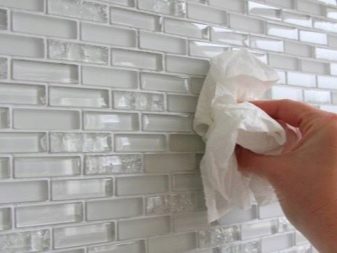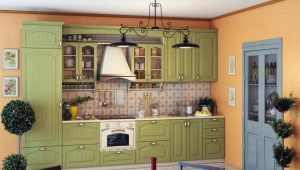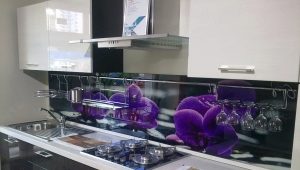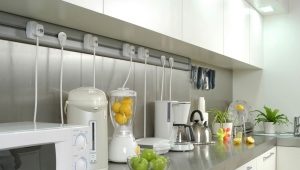Spanish tile on the kitchen apron
Spain is famous for the incredible quality of production of kitchen tiles. The story tells that the firing of finishing materials and its own production technology has existed for more than a thousand years. The rich merchants and the Spanish nobility could afford to decorate the courtyards, city fountains and squares with ceramic tiles.
Now the production of Spanish tiles is a whole tradition. In the factories work masters in charge of the ancient technology of firing.
The Spanish tiles on the kitchen apron can be laid without huge costs - there is a huge assortment of goods on the market and you can find any design. Unusual colors, floral print design, terracotta noble shades - this is only a small part of what can be seen.
Merits
For the kitchen interior, this material is best suited. High internal competition, large reserves of own raw materials for production (there is a lot of red clay without impurities in the country),Thousands of years of tradition and the secret knowledge of production, which accumulated over the centuries - all this is Spanish pottery.
The tile is resistant to damage, exposure to high temperatures, the resistance of ceramics and resistance to coarse chemical cleaners.
The main advantages of Spanish ceramics, which should be paid attention to:
- wear resistance - the material has a protective layer that repels water and can serve as an obstacle to mechanical and gross damage;
- The brightness of the pattern is special color pigments. They are used by factories to protect against burnout;
- unusual decor - the production of several layers of printing pattern. Thanks to this technique of drawing a picture, a tile can have a visual volume, simulate a kitchen apron in a special way and simply introduce unusualness into the decor of a room;
- increased strength - white and red clay, which is used as a base, is able to provide one hundred percent resistance to strong impacts of any kind;
- wide choice - thanks to the constant search for new technologies and design solutions, manufacturers can offer the client a wide variety of design options, size and quality;
- price loyalty is one of the main advantages, as few succeed in combining quality and affordability - companies producing ceramics use special technologies, reducing costs but maintaining quality.
The merit of artistic performance is also at the level of:
- the material is different production technology, which is a thousand years;
- making models in several techniques and styles;
- fashionable styles and new designs are used for the most unusual interiors.
How to choose
Making the kitchen a certain decor is the whole art. You need to choose the material, color combinations and size. What needs to be considered for the correct and high-quality design? What to do if “the eyes are running up” from a large amount of materials and what should be considered first of all when laying ceramics on a wall? Let us examine these questions in turn.
The classic height of the apron, usually about 50-60 cm, and choosing the material for such a height, consider the possibility of minimizing cutting. The optimal size becomes a tile, size 10x10 cm.
The decor of the area near the hob must be considered separately: the distance from the stove to the hood must be at least 70 cm, and in this case, the dimensions of the squares of 10x10 cm are also appropriate for installation.
In order to properly fit the wall of the apron, you need to know the small nuances:
- an apron of ceramics should go under the table a little below and a few centimeters under the cabinets on top;
- tiles with dimensions of 10x10 centimeters should have a stable, even texture without porosity - that is why you can not take the material without glaze;
- The last little secret is: the apron in the kitchen should be smooth, without seams and joints. But, since this luxury is not allowed with tiles, it is necessary to use a silicone-based sealant for joints.
When choosing a tile, consider your budget. The apron zone can be used as the main element of the decor in the room to save money. Then you need to choose a bright model of ceramics, and to reduce the overall finish to a minimum.
Kinds
Spanish tiles are available on the market in several versions.
Ceramics
The most popular type of finishing material is ceramic tile. Cost is correlated with quality, and its acquisition is considered to be more economical than the increasingly popular glass and plastic models.
Elite ceramics production is located in Italy, but Spain is not inferior in quality and cheaper to manufacture. In addition, the Spanish manufacturers provide a huge selection of models.
The unusual version of ceramics currently on the market is a tile called “hog”. It has a rectangular shape of 10x20 cm and is a bit like a brick. This format is put on a ladder or variable to create the effect of beveled edges - this is an extraordinary overflow and additional volume.
Phototile
It is a variety of ceramic products, but it differs in production technology and service life. For example, ceramic squares have several layers of protective coating, and under them - photo printing with ultra-strong and bright colors. This creates the effect of a wet surface, impeccable smoothness and integrity of the pattern. Ceramics in the shape of a square 10x10 cm are most often found in collections.
The price of this design exceeds the cost of conventional ceramic styling, as in such a case, you can order unique designs and perform any photo printing. It is impossible to clean such an apron with hard abrasives - only with soft means.
Mosaic
A tile in the form of a mosaic is made in the event that it is necessary to emphasize the dynamics of the overall interior or the elegance of the chosen design.Colors are selected in one palette, with tint smooth transitions.
If you make an apron in the kitchen in the form of a panel there is no desire, then you can find an analogue - a tile that imitates a small mosaic. This option is extremely simple finishes (the original can not differ). This is not only saving money, but also time - the design takes place as soon as possible.
Glass
The glass base of the tile is a stylish, modern version of the kitchen interior. It is practical to use, and the quality is equivalent to ceramics, only the life of this base is longer due to the lack of sharp edges and sharp chips. The drawing, which is made inside the glass apron does not fade, and the glass does not absorb either smells or dirt. As a rule, special substances are added to the composition of such a tile, which bring transparency to the entire surface or imitate heterogeneity.
Glass tiles vary in several types:
- materials from enamel - are presented by bright models with a monophonic color and a classic size;
decorated glass - small details for the display of panels or iridescent mosaic;
- glass marble - imitates the texture and type of a certain stone;
- glass tile "Marblit" - tint apron with a transparent effect.
Design
To comply with all the rules and propriety of any design, you must consider the following points:
- ceramic tiles should be neutral in tone if the furniture in the kitchen is bright;
- if white tile is used, color accents can be inserted or a part of the design should be printed with a photo print;
- green shades of the kitchen will be correctly complemented with beige, cream or coffee apron flowers. If there is a desire to maintain style in a single tone, then choose adjacent, but not so bright colors of the tile;
- To make the design look unusual, try applying a visual “continuation” of the apron on the furniture: select the adjacent shade of the tabletop or headset.
Brands
Spanish manufacturers differ in some characteristics, ranging from price to quality.
Porcelanosa
This company has been manufacturing ceramics since 1973. After Porcelanosa manufacturers improved the composition of ceramics by adding white clay, tiles became popular in the European market.
The design of ceramic products at the company is sustained in pastel, calm shades and transitions in colors are practically not used.
These models are used in the design of the kitchen in the style of high-tech, classic or minimalist.
ARE Ceramica
This company focuses on current trends.
The young organization ARE Ceramica has many designer, unique collections.
Urban forms, country design, glossy trendy models for the Impressionists, and even the classics of the Spanish ornament - all this is only part of the company's design style. The production uses modern technologies that help to achieve the highest quality material and unique design.
APE Ceramica's pricing policy is extremely loyal.
Styling tips
To put the apron on your own, you need to use some subtleties and tricks - then the work will pass quickly.
The special solution should be mixed in small portions, adding a little glue. This batch is applied to an area equal to two or three tiles, after which the grooves are cut.
The first row must be aligned so that the seams are equal to the crosses between the ribs. Using a level, check the vertical and horizontal.
It is possible to level the unevenness of the walls by applying a thicker layer of glue.It must be removed immediately after the installation. After 24 hours, the seams must be cleaned of glue and put the grout in a row with a spatula. It is possible to wash an apron only after full drying.


